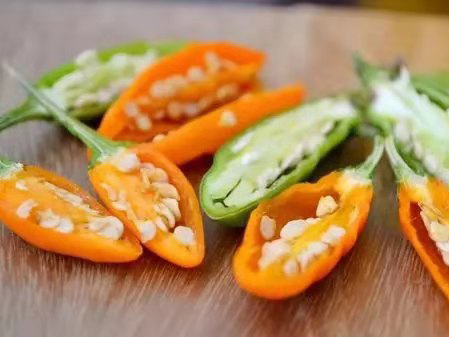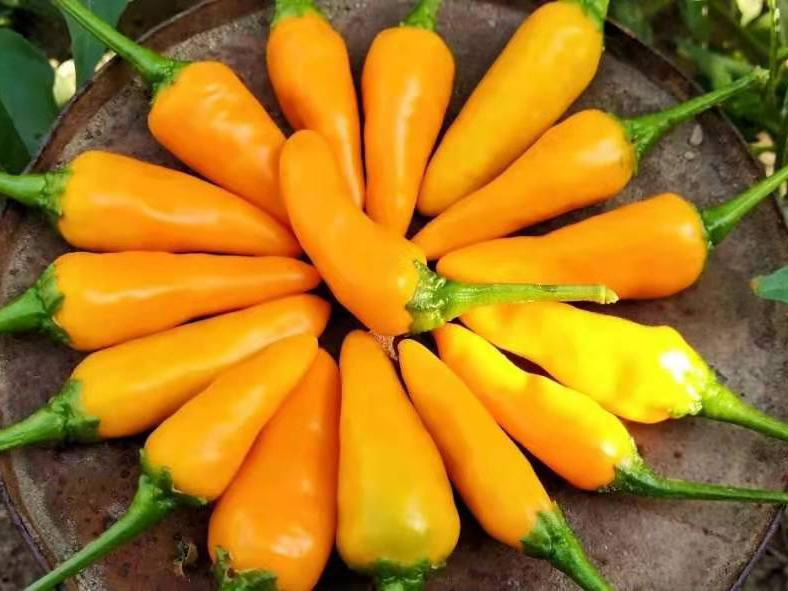 ENG
ENG
 中文
中文


Most chilli is grown as an annual: It is started in early spring (often indoors), then transplanted outside when temperatures are warmer. From summer to autumn, the chilli peppers are harvested; the plants are removed before, or die down in, freezing temperatures. This is so normal a course of chilli growth, Carl von Linné (the botanist who invented the system of naming animal and plant species that we still use) thought it was an annual plant. For that reason, he named the most important of the
2019/07/18Chilli is spicy so that the chilli “pods” will not be eaten by mammals… and along comes the mammal Homo sapiens sapiens (i.e., we humans) and decides to enjoy the pain. One has to wonder how this ever happened. Give a chilli to just about any mammal – dogs, cats, monkeys… all except for one species of tree shrew – and they will not eat it. Same with small children. But somehow, thousands of years ago in South and Central America, people started using chilli as a spice and then even began to grow
2019/07/18
Superhot chilli belong to the species Capsicum chinense. Varieties that belong to this species tend to produce more capsaicin, and therefore spicier ‘pods’, anyways. (But note what is also said in “Is all chilli spicy?”: Not even all Capsicum chinense are hot, some are mild.) In the superhots, there seems to be a mutation (a difference in their genes), too: Normally, capsaicin is only produced in the placental tissue of the fruit (the part that the seeds are attached to). The superhot types of c
2019/07/18
One of the most popular questions about the chilli is which is the hottest, the spiciest, the most pungent chile pepper. It is easy to answer – and difficult to answer. The easy way is to look in the Guiness Book of World Records for the officially declared winner in this category . Since 2017, the Guiness World Record for hottest chilli pepper has been held by the Carolina Reaper from Ed Currie of PuckerButt Pepper Company (USA). It rates an average of 1,641,183 Scoville Heat Units (SHU; the sc
2019/07/18
It is a misunderstanding, really, that something that is a chilli must be spicy. We tend to use the word in this way, but even some of the wild species are not pungent, and even within species, one can sometimes find non-pungent plants in some areas and pungent ones in other areas. In fact, how hot the “pods” of a single chile pepper plant will get depends partly on its genetics, partly on the conditions while the chillies on that plant are growing and ripening. Because of this, one can sometime
2019/07/18
The simple answer to why chilli is spicy is that many capsicum plants produce capsaicinoids, most importantly capsaicin itself. These chemicals trigger mammal’s (TRPV-1, transcient receptor potential vanilloid, type 1, if you must know exactly) nerve receptors that sense different dangers, especially heat. The capsaicinoids are so-called secondary metabolites. They are not necessary for the survival, for the basic (primary) living processes of the plant. They do, however, help the plant against
2019/07/18
The chile pepper species (or the genus Capsicum to which all the chile pepper species belong) is one of the many groups of plants among the nightshade family, the Solanaceae. Potatoes, tomatoes, eggplant also belong to this family, which includes many economically important species. The nightshades are also interesting because they produce alkaloid compounds, which are important medicinal resources, but also toxic substances. The genus Capsicum is definitely American in origin; its centers of di
2019/07/18
The story of chile pepper botany is a long and complicatedone. The genus Capsicum, as a grouping within the family Solanaceae (nightshadefamily), above the level of the species, was already recognized and named byCarl von Linné (Carolus Linnaeus) at the beginning of botanical systematics. Species, however, were still often named after dominantmorphological characteristics, that is, according to the looks of the chilli(especially the fruit). Sometimes, other factors were used to name the species.
2019/07/18
Chilli is more than a spice. But even as a spice, it is morethan just spicy! Several “ethnic” cuisines have long known, and shown, that ittakes certain chile pepper types to give their dishes the right taste – and, asit were, heat. Thai dishes without the lingering heat of many Thai chilliesjust aren’t the same. Hunan food without the mellow burn of the right type ofchilli just isn’t Hunan food. In their article on “ the sensory properties of chile pepperheat ” (published in the scientific journ
2019/07/18
© 2020 World Chilli Alliance. All Rights Reserved.